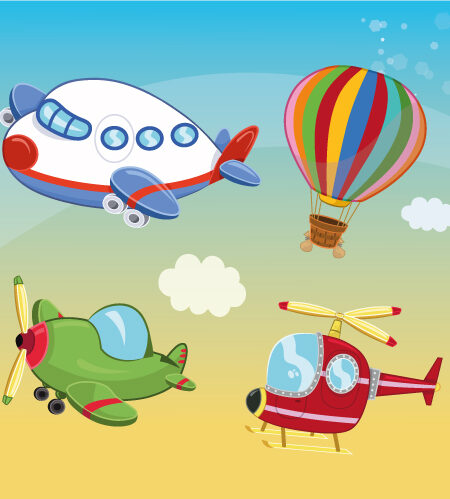Table of Contents
Introduction:
The sky, a canvas of endless possibilities, is adorned with remarkable feats of human engineering—airborne marvels that have redefined the way we perceive distance and travel. In this exhilarating exploration of the skies, we will delve into the diverse realm of air transport. From magnificent airplanes to nimble helicopters and tranquil hot air balloons, these aerial wonders have not only connected continents but also inspired generations to dream, innovate, and color the world around them.
Understanding Air Transport
Means of air transport refer to various types of vehicles and aircraft that are designed to travel through the air, carrying passengers, goods, or cargo. These vehicles utilize aerodynamic principles to achieve lift and stay airborne. Here are some common means of air transport:
Airplanes:
Airplanes, those graceful giants of the sky, are powered aircraft with fixed wings and jet engines. From sleek commercial airliners to agile private jets, airplanes cover vast distances at impressive speeds, linking cities and cultures worldwide.

Helicopters:
Helicopters, with their distinctive rotor blades, can take off and land vertically. They are versatile machines used in various roles, from emergency medical services to military operations. Helicopters showcase the art of hovering gracefully amidst the clouds.

Hot Air Balloons:
Hot air balloons, gentle giants of the sky, rely on hot air for buoyancy. These serene vessels offer a unique, peaceful perspective of the world below. Hot air balloon rides provide an unforgettable experience, drifting silently above picturesque landscapes.

Dirigibles (Airships):
Dirigibles are large, gas-filled balloons with an internal framework. They are steerable and were historically used for passenger travel and military reconnaissance. While they are less common today, they still find applications in advertising and tourism.

Importance of air transportation
Air transportation plays a pivotal role in today’s globalized world, contributing significantly to various aspects of society, economy, and connectivity. Here are several key points highlighting the importance of air transportation:
1. Global Connectivity: Air transport connects people and businesses across continents, fostering cultural exchange, tourism, and international trade. It enables individuals to travel for leisure, education, and work, facilitating a deeper understanding between different cultures and societies.
2. Economic Growth: The aviation industry creates jobs and stimulates economic growth. Airlines, airports, aircraft manufacturers, and related businesses provide employment to millions of people worldwide. Airports serve as hubs for economic activities, attracting investments and generating revenue through retail, hospitality, and other services.
3. Trade and Commerce: Air transportation enables swift movement of goods and products, allowing businesses to engage in international trade efficiently. Perishable goods, high-value items, and time-sensitive shipments can be transported quickly, enhancing supply chains and supporting global commerce.
4. Emergency Response and Humanitarian Aid: Air transport is crucial during emergencies and natural disasters. It facilitates rapid deployment of humanitarian aid, medical supplies, and rescue teams to affected regions. During crises, aircraft play a vital role in evacuations, disaster relief, and supporting communities in need.
5. Innovation and Technological Advancement: The aviation industry drives innovation in technology, materials, and engineering. Research and development in aviation lead to advancements in various fields, including aerospace engineering, materials science, and environmental technologies. These innovations often have applications beyond aviation, benefiting other sectors.
6. Time Efficiency and Accessibility: Air travel significantly reduces travel time compared to other modes of transportation. It allows people to cover vast distances in a matter of hours, making it feasible for business meetings, tourism, and family visits. Airports, situated in various regions, enhance accessibility to remote or isolated areas.
7. Environmental Considerations: While aviation contributes to greenhouse gas emissions, ongoing efforts are made to develop sustainable aviation fuels, reduce carbon emissions, and improve fuel efficiency. Research and innovation in aviation also focus on creating eco-friendly technologies and practices to minimize the industry’s environmental impact.

Conclusion:
As you embark on this colorful journey through the world of air transport, remember that each drawing carries the spirit of adventure and the joy of discovery. Whether it’s the powerful engines of an airplane, the rhythmic thumping of helicopter rotors, or the serene silence of a hot air balloon ride, these modes of transport invite you to color not just the pages but also your imagination.
So, record your colors, let your creativity take flight, and bring these incredible air transport wonders to life. As you add vibrant hues to these drawings, immerse yourself in the magic of flight, and perhaps, find inspiration to dream to new heights in your own endeavors. Happy coloring and happy travels! ✈️🚁🎈


Comments